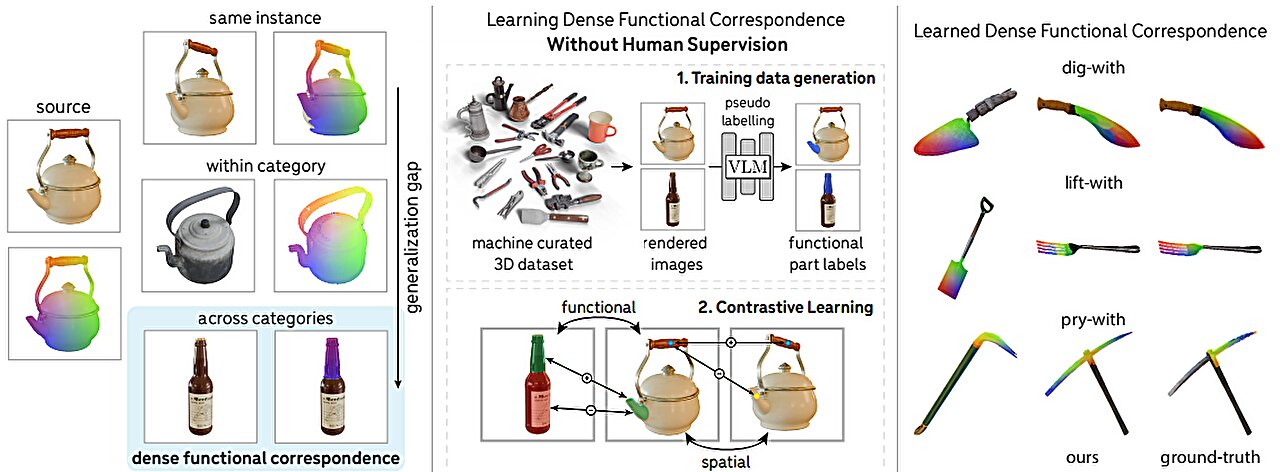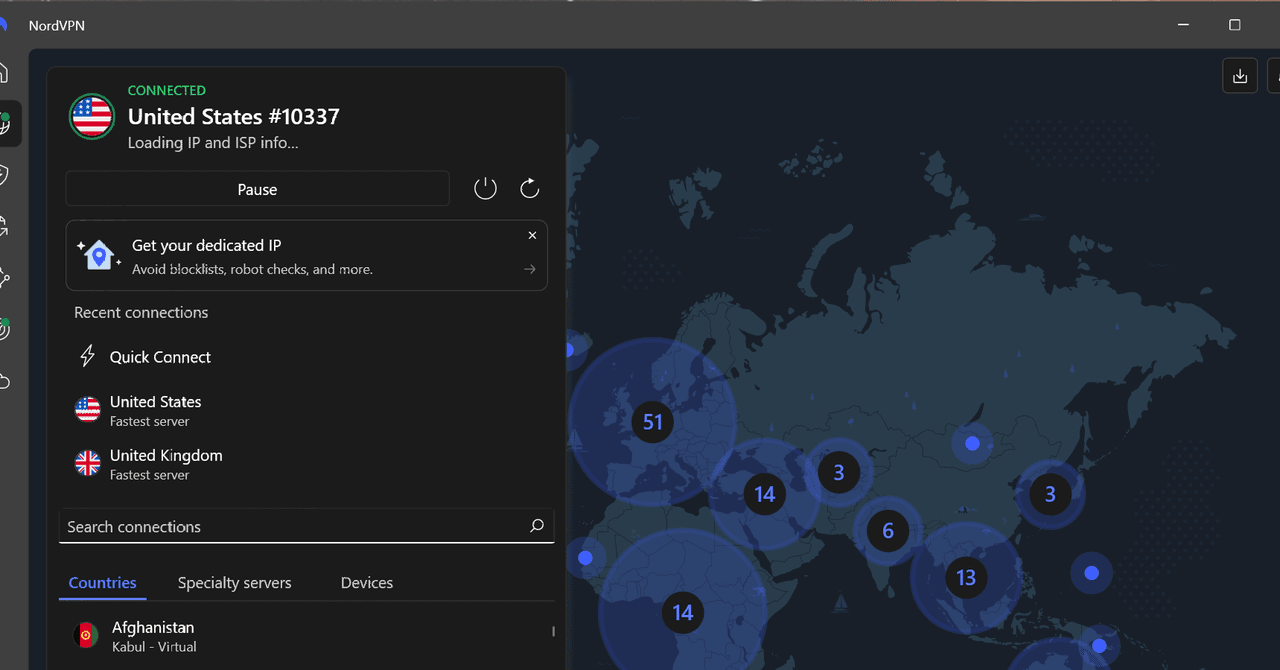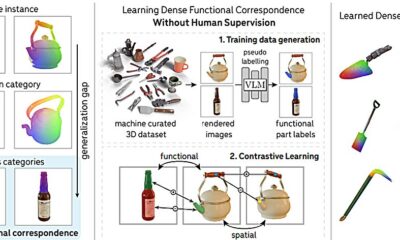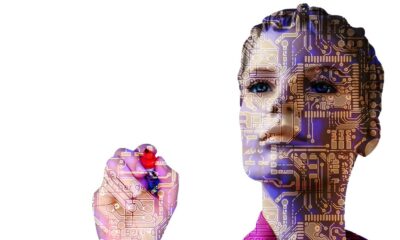Tech
How to make ‘smart city’ technologies behave ethically

As local governments adopt new technologies that automate many aspects of city services, there is an increased likelihood of tension between the ethics and expectations of citizens and the behavior of these “smart city” tools. Researchers are proposing an approach that will allow policymakers and technology developers to better align the values programmed into smart city technologies with the ethics of the people who will be interacting with them.
“Our work here lays out a blueprint for how we can both establish what an AI-driven technology’s values should be and actually program those values into the relevant AI systems,” says Veljko Dubljević, corresponding author of a paper on the work and Joseph D. Moore Distinguished Professor of Philosophy at North Carolina State University.
At issue are smart cities, a catch-all term that covers a variety of technological and administrative practices that have emerged in cities in recent decades. Examples include automated technologies that dispatch law enforcement when they detect possible gunfire, or technologies that use automated sensors to monitor pedestrian and auto traffic to control everything from street lights to traffic signals.
“These technologies can pose significant ethical questions,” says Dubljević, who is part of the Science, Technology & Society program at NC State.
“For example, if AI technology presumes it detected a gunshot and sends a SWAT team to a place of business, but the noise was actually something else, is that reasonable?” Dubljević asks. “Who decides to what extent people should be tracked or surveilled by smart city technologies? Which behaviors should mark someone out as an individual who should be under escalated surveillance?
“These are reasonable questions, and at the moment there is no agreed-upon procedure for answering them. And there is definitely not a clear procedure for how we should train AI to answer these questions.”
To address this challenge, the researchers looked to something called the Agent Deed Consequence (ADC) model. The ADC model holds that people take three things into account when making a moral judgment: the agent, which is the character or intent of the person who is doing something; the deed, or what is being done; and the consequence, or the outcome that results from the deed.
In their paper now published in Algorithms, the researchers demonstrate that the ADC model can be used to not only capture how humans make value judgments and ethical decisions, but can do so in a way that can be programmed into an AI system. This is possible because the ADC model uses deontic logic, which is a type of imperative logic.
“It allows us to capture not only what is true, but what should be done,” says Daniel Shussett, first author of the paper and a postdoctoral researcher at NC State. “This is important because it drives action, and can be used by an AI system to distinguish between legitimate and illegitimate orders or requests.”
“For example, if an AI system is tasked with managing traffic and an ambulance with flashing emergency lights approaches a traffic light, this may be a signal to the AI that the ambulance should have priority and alter traffic signals to help its travel quickly,” says Dubljević. “That would be a legitimate request. But if a random vehicle puts flashing lights on its roof in an attempt to get through traffic more quickly, that would be an illegitimate request and the AI should not give them a green light.
“With humans, it is possible to explain things in a way where people learn what should and shouldn’t be done, but that doesn’t work with computers. Instead, you have to be able to create a mathematical formula that represents the chain of reasoning. The ADC model allows us to create that formula.”
“These emerging smart city technologies are being adopted around the world, and the work we’ve done here suggests the ADC model can be used to address the full scope of ethical questions these technologies pose,” says Shussett. “The next step is to test a variety of scenarios across multiple technologies in simulations to ensure the model works in a consistent, predictable way. If it passes those tests, it would be ready for testing in real-world settings.”
More information:
Daniel Shussett et al, Applying the Agent-Deed-Consequence (ADC) Model to Smart City Ethics, Algorithms (2025). DOI: 10.3390/a18100625
Citation:
How to make ‘smart city’ technologies behave ethically (2025, October 20)
retrieved 20 October 2025
from https://techxplore.com/news/2025-10-smart-city-technologies-ethically.html
This document is subject to copyright. Apart from any fair dealing for the purpose of private study or research, no
part may be reproduced without the written permission. The content is provided for information purposes only.
Tech
AI model could boost robot intelligence via object recognition

Stanford researchers have developed an innovative computer vision model that recognizes the real-world functions of objects, potentially allowing autonomous robots to select and use tools more effectively.
In the field of AI known as computer vision, researchers have successfully trained models that can identify objects in two-dimensional images. It is a skill critical to a future of robots able to navigate the world autonomously. But object recognition is only a first step. AI also must understand the function of the parts of an object—to know a spout from a handle, or the blade of a bread knife from that of a butter knife.
Computer vision experts call such utility overlaps “functional correspondence.” It is one of the most difficult challenges in computer vision. But now, in a paper that will be presented at the International Conference on Computer Vision (ICCV 2025), Stanford scholars will debut a new AI model that can not only recognize various parts of an object and discern their real-world purposes but also map those at pixel-by-pixel granularity between objects.
A future robot might be able to distinguish, say, a meat cleaver from a bread knife or a trowel from a shovel and select the right tool for the job. Potentially, the researchers suggest, a robot might one day transfer the skills of using a trowel to a shovel—or of a bottle to a kettle—to complete a job with different tools.
“Our model can look at images of a glass bottle and a tea kettle and recognize the spout on each, but also it comprehends that the spout is used to pour,” explains co-first author Stefan Stojanov, a Stanford postdoctoral researcher advised by senior authors Jiajun Wu and Daniel Yamins. “We want to build a vision system that will support that kind of generalization—to analogize, to transfer a skill from one object to another to achieve the same function.”
Establishing correspondence is the art of figuring out which pixels in two images refer to the same point in the world, even if the photographs are from different angles or of different objects. This is hard enough if the image is of the same object but, as the bottle versus tea kettle example shows, the real world is rarely so cut-and-dried. Autonomous robots will need to generalize across object categories and to decide which object to use for a given task.
One day, the researchers hope, a robot in a kitchen will be able to select a tea kettle to make a cup of tea, know to pick it up by the handle, and to use the kettle to pour hot water from its spout.
Autonomy rules
True functional correspondence would make robots far more adaptable than they are currently. A household robot would not need training on every tool at its disposal but could reason by analogy to understand that while a bread knife and a butter knife may both cut, they each serve a specific purpose.
In their work, the researchers say, they have achieved “dense” functional correspondence, where earlier efforts were able to achieve only sparse correspondence to define only a few key points on each object. The challenge so far has been a paucity of data, which typically had to be amassed through human annotation.
“Unlike traditional supervised learning where you have input images and corresponding labels written by humans, it’s not feasible to humanly annotate thousands of pixels individually aligning across two different objects,” says co-first author Linan “Frank” Zhao, who recently earned his master’s in computer science at Stanford. “So, we asked AI to help.”
The team was able to achieve a solution with what is known as weak supervision—using vision-language models to generate labels to identify functional parts and using human experts only to quality-control the data pipeline. It is a far more efficient and cost-effective approach to training.
“Something that would have been very hard to learn through supervised learning a few years ago now can be done with much less human effort,” Zhao adds.
In the kettle and bottle example, for instance, each pixel in the spout of the kettle is aligned with a pixel in the mouth of the bottle, providing dense functional mapping between the two objects. The new vision system can spot function in structure across disparate objects—a valuable fusion of functional definition and spatial consistency.
Seeing the future
For now, the system has been tested only on images and not in real-world experiments with robots, but the team believes the model is a promising advance for robotics and computer vision. Dense functional correspondence is part of a larger trend in AI in which models are shifting from mere pattern recognition toward reasoning about objects. Where earlier models saw only patterns of pixels, newer systems can infer intent.
“This is a lesson in form following function,” says Yunzhi Zhang, a Stanford doctoral student in computer science. “Object parts that fulfill a specific function tend to remain consistent across objects, even if other parts vary greatly.”
Looking ahead, the researchers want to integrate their model into embodied agents and build richer datasets.
“If we can come up with a way to get more precise functional correspondences, then this should prove to be an important step forward,” Stojanov says. “Ultimately, teaching machines to see the world through the lens of function could change the trajectory of computer vision—making it less about patterns and more about utility.”
More information:
Weakly-Supervised Learning of Dense Functional Correspondences. dense-functional-correspondence.github.io/ On arXiv: DOI: 10.48550/arxiv.2509.03893
Citation:
AI model could boost robot intelligence via object recognition (2025, October 20)
retrieved 20 October 2025
from https://techxplore.com/news/2025-10-ai-boost-robot-intelligence-recognition.html
This document is subject to copyright. Apart from any fair dealing for the purpose of private study or research, no
part may be reproduced without the written permission. The content is provided for information purposes only.
Tech
What the Huge AWS Outage Reveals About the Internet

A massive cloud outage stemming from Amazon Web Services’s key US-EAST-1 region, its hub near the United States capitol in northern Virginia, caused widespread disruptions of websites and platforms around the world on Monday morning. Amazon’s main e-commerce platform and other properties including Ring doorbells and the Alexa smart assistant suffered interruptions and outages throughout the morning, as did Meta’s communication platform WhatsApp, OpenAI’s ChatGPT, PayPal’s Venmo payment platform, multiple web services from Epic Games, multiple British government sites, and many others.
The outages stemmed from Amazon’s “DynamoDB” database application programming interfaces in US-EAST-1, and AWS said in status updates that the problem was specifically related to DNS resolution issues. The “Domain Name System” is a foundational internet service that essentially acts as an automatic phonebook lookup to translate web URLs like “www.wired.com” into numeric server IP addresses so web browsers show users the right content. DNS “resolution” issues occur when DNS servers aren’t accurately connecting these dots and, to keep with the phonebook analogy, are providing the wrong numbers for a given name, or vice versa.
“Based on our investigation, the issue appears to be related to DNS resolution of the DynamoDB API endpoint in US-EAST-1,” AWS wrote in status updates on Monday. Shortly after the company added: “If you are still experiencing an issue resolving the DynamoDB service endpoints in US-EAST-1, we recommend flushing your DNS caches.”
An AWS spokesperson did not immediately respond when asked for details about the nature of the failure. DNS resolution issues can be malicious—known as DNS hijacking—but there is no indication that Monday’s AWS outages were nefarious.
“When the system couldn’t correctly resolve which server to connect to, cascading failures took down services across the internet,” says Davi Ottenheimer, a longtime security operations and compliance manager and a vice president at the data infrastructure company Inrupt. “Today’s AWS outage is a classic availability problem, and we need to start seeing it more as data integrity failure.”
Problems began around 3 am ET. By 5:22 am ET AWS had applied “initial mitigations” that were starting to take effect. At 6:35 am ET, Amazon said that it had fully addressed the underlying technical issues but that “some services will have a backlog of work to work through, which may take additional time to fully process.”
Tech
There Are Hundreds of VPNs, But I Only Recommend These 6

VPNs, Compared
Other VPNs We’ve Tested
EventVPN is the new hotness in the VPN world. It’s a free, ad-supported VPN that comes from ExpressVPN. Ads and VPNs don’t really mix, but EventVPN says it’s able to offer a free service via Apple’s App Tracking Transparency (ATT) and Identifier for Advertisers (IDFA), basically allowing it to serve ads without harvesting your personal data. The problem is the pervasiveness of ads. A banner lives at the top of the app at all times, and you’ll need to sit through a 30-second ad each time you connect or disconnect; a big problem when some servers posted unreasonably slow speeds. I’ll admit that EventVPN is a unique concept, but I see nothing about it that’s better than ProtonVPN or Windscribe for a free VPN service. And when it comes to the inconvenience of sitting through ads, it’s straight-up worse.
Private Internet Access (PIA) has a long history in the VPN space, and it’s maintained a track record of defending user privacy—even in the face of actual criminal activity. In 2016, a criminal complaint was filed in Florida against Preston Alexander McWaters for threats made online. McWaters was eventually convicted and sentenced to 42 months in prison. Investigators traced the online threats back to PIA’s servers and subpoenaed the company. As the complaint reads, “A subpoena was sent to [Private Internet Access] and the only information they could provide is that the cluster of IP addresses being used was from the east coast of the United States.” McWaters engaged in several other identifying activities, according to the complaint, but PIA wasn’t among them. Despite such a clear view of a VPN provider upholding its no-logging policy, PIA didn’t impress me during my tests. It’s slightly more expensive than a lot of our top picks, and it delivered the worst speeds out of any VPN I tested, with more than a 50 percent drop on the closest US server. (Windscribe, for context, only dropped 15.6 percent of my speed.)
MysteriumVPN is the go-to dVPN, or decentralized VPN, as far as I can tell. The concept of a decentralized VPN has existed for a while, but it’s really gained traction over the last couple of years. The idea is to have a network of residential IP addresses that make up the network, routing your traffic through normal IP addresses to get around the increasingly common block lists for VPN servers. Mysterium accomplishes this network with MystNodes. It’s a crypto node. People buy the node to earn crypto, and they’re put into the Mysterium network. It’s not inherently bad, but routing your traffic through a single residential IP is a little worrisome. Even without the decentralized kick, Mysterium was slow, and it doesn’t maintain any sort of privacy materials, be it a third-party audit, warranty canary, or transparency report.
PrivadoVPN is one of the popular options to recommend as a free VPN. It offers a decent free service, with a handful of full-speed servers and 10 GB of data per month. You’ll have to suffer through four—yes, four—redirects begging you to pay for a subscription before signing up, but the free plan works. The problem is how new PrivadoVPN is. There’s no transparency report or audit available, and although the speeds are decent, they aren’t as good as Proton, Windscribe, or Surfshark. PrivadoVPN isn’t bad, but it’s hard to recommend when Proton and Windscribe exist with free plans that are equally as good.
VPNs to Avoid
You’ll find dozens of free VPNs all claiming to protect your privacy. Most of them don’t. There are plenty of VPNs I don’t recommend, but these are a few I’ve tested worth mentioning.
Hola is an infamous name in the VPN industry, but it’s been close to a decade since its very public debacle. Hola is free, and it’s able to stay free because it uses a peer-to-peer network. Hola also owns Bright Data (formerly Luminati), which is a data collection company. In 2015, Hola sold access to the network of its free users (via Luminati), which was used in a distributed denial-of-service attack on 8chan. It’s been a decade since that incident, but Hola still operates in a similar way. If you don’t pay, you could be used as an exit node in Bright Data’s network, and the privacy policy makes it clear that Hola logs data about your usage, including your IP address, the pages you visit, and timestamps.
X-VPN is available on desktop, but it primarily shows up in results on the Apple App Store and Google Play, targeting mobile users with a free offering. X-VPN hasn’t done anything explicitly wrong like Hola, but it has way too many inconsistencies to recommend. For starters, it uses a proprietary VPN protocol, which it obfuscates within the app. Proprietary protocols like NordVPN’s NordLynx and ExpressVPN’s Lightway are based on existing, open source protocols. Further, X-VPN was highlighted in a Tech Transparency Project report about free VPNs with links to the Chinese government; X-VPN is based in Hong Kong. There’s no smoking gun with X-VPN, but there doesn’t need to be. The speeds aren’t the best, the app lacks basic features like split tunneling, and the pricing for a paid plan is in line with top providers.
How We Test VPNs
Functionally, a VPN should do two things: keep your internet speed reasonably fast, and actually protect your browsing data. That’s where I focused my testing. Extra features, a comfy UI, and customization settings are great, but they don’t matter if the core service is broken.
Speed testing requires spot-checking, as the time of day, the network you’re connected to, and the specific VPN server you’re using can all influence speeds. Because of that, I always set a baseline speed on my unprotected connection directly before recording results, and I ran the test three times across both US and UK servers. With those baseline drops, I spot-checked at different times of the day over the course of a week to see if the speed decrease was similar.
Security is a bit more involved. For starters, I checked for DNS, WebRTC, and IP leaks every time I connected to a server using Browser Leaks. I also ran brief tests sniffing my connection with Wireshark to ensure all of the packets being sent were secured with the VPN protocol in use.
On the privacy front, the top-recommended services included on this list have been independently audited, and they all maintain some sort of transparency report. In most cases, there’s a proper report, but in others, such as Windscribe, that transparency is exposed through legal proceedings.
Power up with unlimited access to WIRED. Get best-in-class reporting and exclusive subscriber content that’s too important to ignore. Subscribe Today.
-

 Tech1 week ago
Tech1 week agoAustralian airline Qantas says millions of customers’ data leaked online
-

 Tech1 week ago
Tech1 week agoUK police to upgrade illicit asset recovery system | Computer Weekly
-

 Tech4 days ago
Tech4 days agoWhy the F5 Hack Created an ‘Imminent Threat’ for Thousands of Networks
-

 Entertainment1 week ago
Entertainment1 week agoKaty Perry and Justin Trudeau are dating: Report
-

 Tech5 days ago
Tech5 days agoWhat Is Google One, and Should You Subscribe?
-

 Entertainment1 week ago
Entertainment1 week agoVictoria Beckham thinks Brooklyn Beckham is fed up with Nicola Peltz drama?
-

 Business1 week ago
Business1 week agoEnvironment minister Bhupender Yadav heads to Brazil: India engages in pre-talks ahead of COP30; climate finance and adaptation on agenda – The Times of India
-

 Tech1 week ago
Tech1 week agoA US startup plans to deliver ‘sunlight on demand’ after dark. Can it work? Would we want it to?

















